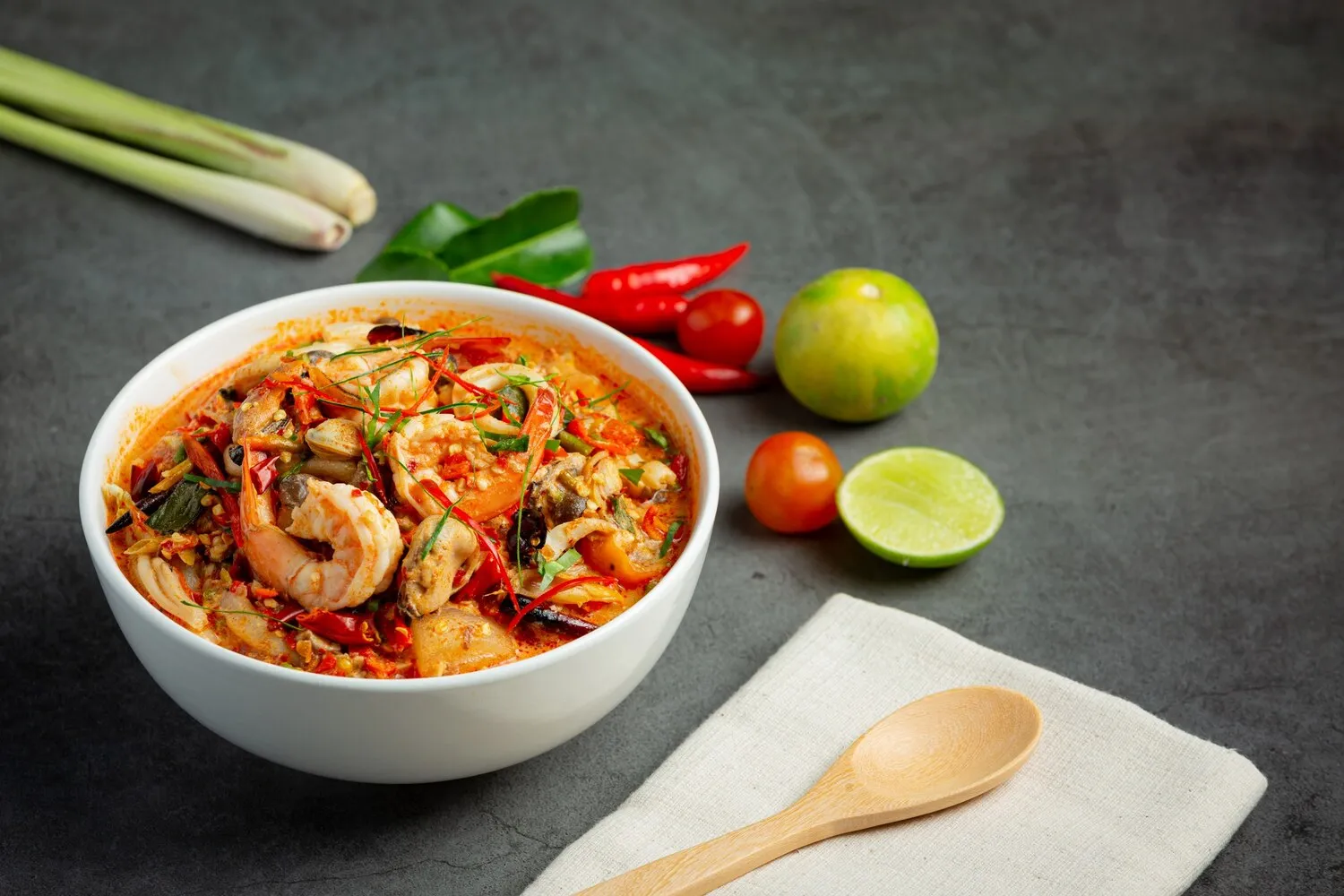
Lan Viet Market: Pho
A traditional Vietnamese noodle soup consisting of broth, rice noodles, herbs, and meat (typically beef or chicken).
Nutrition Facts
* The % Daily Value (DV) tells you how much a nutrient in a serving of food contributes to a daily diet. 2,000 calories a day is used for general nutrition advice.
Pho emerged in the early 20th century in northern Vietnam, likely influenced by both French colonial cuisine (specifically, pot-au-feu) and Chinese noodle soups. It quickly gained popularity as a street food and a staple dish, evolving over time with regional variations.
Pho is more than just a meal; it is a cultural symbol of Vietnam, deeply intertwined with the nation's history, traditions, and social life. It is enjoyed at any time of day, from breakfast to late-night supper, and is often shared among family and friends.
A National Dish
Pho is considered Vietnam's national dish, representing the country's culinary heritage and identity. It is a source of national pride and is often featured in cultural events and celebrations.
A Social Experience
Eating Pho is a social experience, often enjoyed in bustling street-side stalls or cozy restaurants. It is a time for people to gather, connect, and share a meal together.
Regional Variations
Different regions of Vietnam have their own variations of Pho. Northern Pho (Pho Bac) tends to have a clearer broth and simpler flavors, while Southern Pho (Pho Nam) often features a sweeter broth and more elaborate garnishes.
The complex flavor profile of Pho is characterized by a savory and aromatic broth, balanced with fresh herbs, vibrant spices, and the richness of the meat.
The broth, typically made from beef or chicken bones simmered for hours with charred onions, ginger, star anise, cloves, and sometimes cinnamon, is the heart of Pho. Rice noodles provide a delicate and slightly chewy texture. Common toppings include thinly sliced beef (rare or cooked), chicken, bean sprouts, cilantro, basil, lime wedges, and chili peppers. Fish sauce, hoisin sauce, and sriracha are frequently added to enhance the flavor.
Broth First
Always taste the broth before adding any condiments. This allows you to appreciate the nuances of the broth's flavor and adjust it to your liking.
Customize with Condiments
Don't be afraid to experiment with condiments like fish sauce, hoisin sauce, sriracha, and chili peppers to create your perfect flavor combination.
Fresh Herbs are Key
Add fresh herbs like cilantro, basil, and mint generously to enhance the aroma and freshness of the dish.
Noodle Texture
Eat the noodles right away before they get too soggy from the broth. If you prefer firmer noodles, ask if they are available.
Explore additional Soup dishes and restaurants
Explore SoupDiscover top dining spots and culinary experiences in Dublin.
Explore DublinLearn more about the food culture, restaurant scene, and culinary heritage of United States.
Explore United States